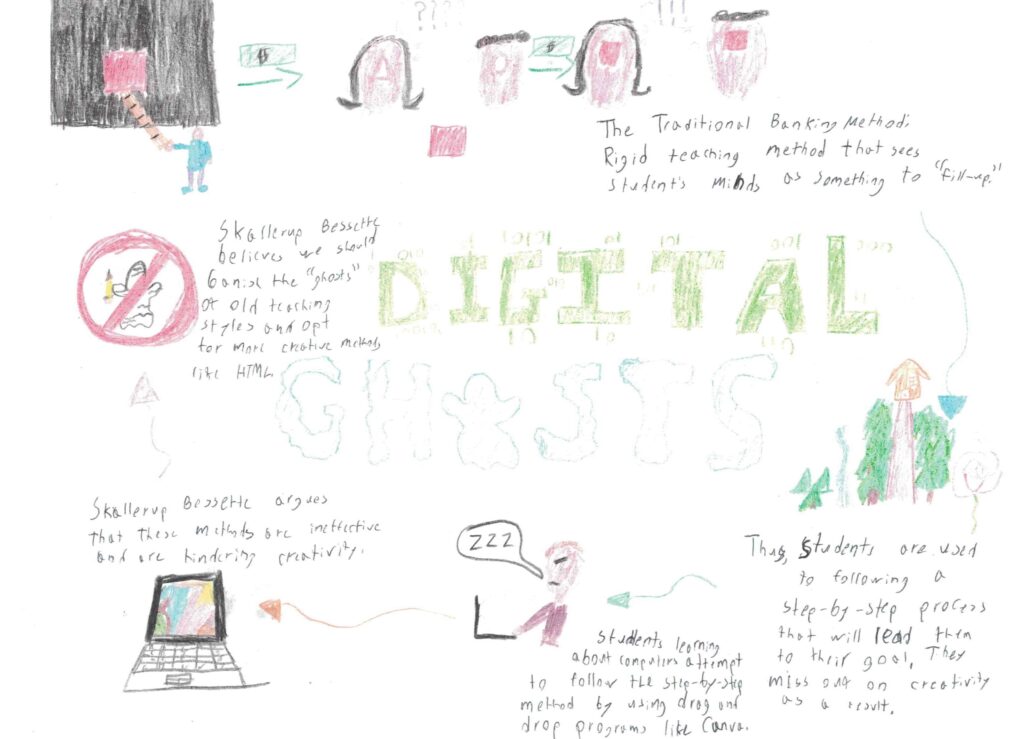I read Ashley Hinck’s article “Digital Ghosts in the Modern Classroom”. This article advocates for a shift in education. Hinck comments on the traditional method of teaching involving systematic methods such as worksheets and templates. She indicates that this is the “banking method” of education which views students minds as something to “fill” with knowledge. This systematic method of teaching/learning is limiting to students; they are forced to adjust their learning methods and the way they understand the lesson.

The systematic approach to teaching was necessary in the days before educational technologies began to emerge due to the limitations of pen and paper. Today, we can use technologies to teach in much more creative methods. Despite the emergence of these technologies, many teachers continue to utilize the systematic methods of learning like with PowerPoint or Canva. When students learn in this way they are shoehorned away from their creativity. Teachers are not entirely to blame; the students are habituated to this method of learning and default to it. They want step-by-step instructions to make a final product to be graded by the teacher. The habit of using template-based learning methods is engraved into the minds of students everywhere; these are the ghosts of teaching past.

In my personal experience I believe that Canva (as an example of template-based learning) does inhibit creativity. You are unable to create exactly what you like and must adapt to the templates that Canva provides. Programs like HTML, CSS, or physically drawing something, are much more malleable and student’s creativity is unbounded. For this project itself, I began to use Canva because I had visual metaphors that I wanted to share. I was inhibited by the templates though and could not find what I visualized in my head. As a result, I used my lackluster artistic abilities to draw what was in my brain.

My artifact demonstrates template-based thinking through visual metaphor. A teacher is shown “teaching the square method” but the students have “triangle and circle brains”. In the metaphor, they are forced to adapt to the teacher’s lessons and abandon their ways of thinking and learning (they take the square and lose the triangle and circle). With modern learning technologies, teaching is more easily adaptable to each student’s way of learning, and thus the students are not be forced to abandon their shapes. A second visual metaphor I included is a straight and narrow path through the forest representing the step-by-step method; students follow a path to the answer. As a result, they miss out on creativity which is represented by the beauty of a river and a rose beyond the treeline.
When students learn about technology, Hinck advocates that teachers should encourage more creative ways of learning. She hopes that students will be able to express their ideas better through open-source programs like HTML and CSS as opposed to programs like Canva. She indicates that following drag-and-drop templates are damaging creativity in students; they are unable to create their own websites, just follow pre-made templates. As teachers, we need to advocate for creativity in our methods of teaching.

